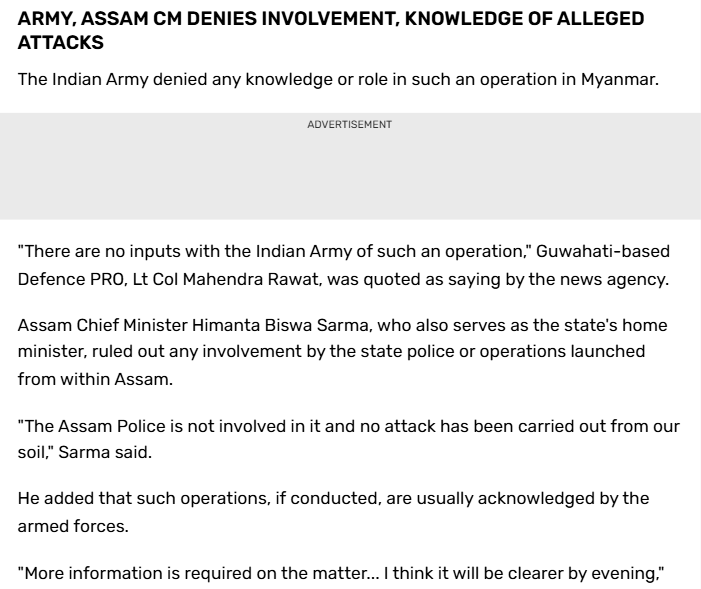Introduction
The digital communication landscape in India is set to change significantly as the Department of Telecommunications is preparing to implement new rules for messaging apps that operate using SIM cards. This step is part of the government’s effort to tackle cybercrime at its roots by enforcing stricter verification and reducing the number of communication platforms that can be misused. One clear change that users will notice is that WhatsApp Web sessions will now be automatically logged out every six hours, disrupting the previously uninterrupted use across multiple devices. Although this may appear to be a simple inconvenience, the measure is part of a broader plan to address the growing problem of cyber fraud. Cybercriminals exploit messaging apps like WhatsApp without keeping the registered SIM in the device, making it difficult to trace fraud. These efforts are surely gonna address these challenges at the root.
The Incident: What Has Changed?
The new regulations will make it mandatory for messaging platforms to create a direct link between user accounts and verified SIM identities. By this method, every account in the network can be associated with a valid and traceable mobile number. Because of this requirement, it is expected that WhatsApp is going to tighten the management of device sessions. The six-hour logout cycle for WhatsApp Web is implemented to prevent long-lived and unmonitored sessions that are sometimes taken advantage of in account takeovers, device-based breaches, and remote access scams. This change significantly affects the user experience. WhatsApp Web, often used for communication, customer support, and coordination, will now require more frequent authentication through mobile devices. Though mobile access remains uninterrupted, desktop and browser-linked sessions will be subjected to tighter security controls.
Why Identity-Linked Messaging Matters
India is facing a rapidly evolving cybercrime ecosystem in which messaging applications play a central role. Scammers often rely on fake, unverified, or illegally obtained SIM cards to create temporary accounts that can be used for various illegal activities, such as sending phishing messages, impersonating government officials, and deceiving victims through call centres set up for scams.
The new rules take into consideration the following main issues:
- Anonymity of accounts makes large-scale fraud possible: Criminals operate bulk scams using hundreds of SIM-linked accounts.
- Freedom to drop identities: Illegal SIMs are discarded after fraud, making it difficult for the police to trace the criminals.
- Multi-device vulnerabilities that last for a long time: Access without permission to WhatsApp Web sessions that last for a long time is seen as the main reason for OTP theft, account hijacking, and on-device social engineering.
The government wants to disrupt these foundations by enforcing stricter traceability.
A Sector Under Strain: Misuse of Messaging Platforms
Messaging apps have turned out to be the most important thing in India's digital life, from communication to enterprise. This very widespread use of messaging apps has made them an easy target for cybercriminals.
The scams that are frequently visible are:
- WhatsApp groupsare used for job and loan scams
- False communication from banks, government departments, and payment applications
- Sextortion and blackmail through unverified accounts
- Remote-access fraud with attackers who are watching WhatsApp Web sessions
- Coordinated spread of false information and distribution of deepfake videos
The employment of AI-generated personas and "SIM farms" has made it harder to secure the systems even more. Unless there is a very strict linking of users to authenticated SIM credentials, the platforms might degenerate into uncontrollable rafts of cybercrime.
Government and Regulatory Response
The Department of Telecommunications is initiating a process of stricter compliance measures and cooperating with the Ministry of Home Affairs, along with the Indian Cyber Crime Coordination Centre. The main points of the directions include the following:
- Identity verification linked to a SIM is mandatory for the creation of messaging accounts
- Device re-authentication on platforms often starts with WhatsApp Web
- Coordination with the telecom operators to the extent of getting suspicious login patterns
- Protocols for the sharing of data with law enforcement in the course of cybercrime investigations
- Compliance checks of digital platforms to verify adherence to national safety guidelines
This coordinated effort reflects the understanding that the security of communication platforms is the responsibility of both the regulators and the service providers.
The Bigger Picture: Strengthening India’s Digital Trust
The fresh regulations are in step with the worldwide trend where the platforms of messaging have to be more responsible, as governments are demanding more and more from them. The same discussions are going on in the EU, UK, and certain Southeast Asian regions.
For India, it is imperative to enhance identity management because:
- The nation has the largest base of messaging users in the whole world
- Cybercrime is increasing at a rate quicker than that of traditional crime
- Digital government services rely on communications that are secure
- Identity integrity is the basis for trust in online transactions and digital payments
The six-hour logout policy for WhatsApp Web is a small action, but it is an indication of a bigger transformation towards a regulation that is active rather than just policing that is reactive.
What Needs to Happen Next?
The implementation of SIM-linked regulations must involve several subsequent measures to make them effective.
- Strengthening Digital Literacy: It is necessary to educate users about the benefits of frequent logouts and security improvements.
- Ensuring Privacy Protections: The DPDP Act should create a strong barrier against the misuse of personal data in identity-linked messaging that will be implemented.
- Collaboration with Platforms: Messaging services should seek to secure authentication under the compromise of safety checks.
- Monitoring SIM fraud at the source: Illicit SIM provisioning enforcement is the main source of criminals, not just changing their methods.
- Continuous Review and Feedback: Policymaking needs to keep pace with real-life difficulties and new inventions in technology.
Conclusion
India's announcement to impose regulations on messaging apps with SIM linkage is a major step forward in preventing cybercrime from occurring in the first place. Although the immediate effect, like the six-hour logout requirement for WhatsApp Web, may annoy users, it is nevertheless part of a bigger goal: to develop a more secure and trustworthy digital communication environment.
Securing the communication that links millions of people is vital as India becomes more and more digital. Through a combination of regulatory measures, technological protection, and user education, the country is headed toward a time when criminals in the cyber world will find it very difficult to operate and where consumers will be able to interact online with much more confidence and safety.
References









.webp)
.webp)
